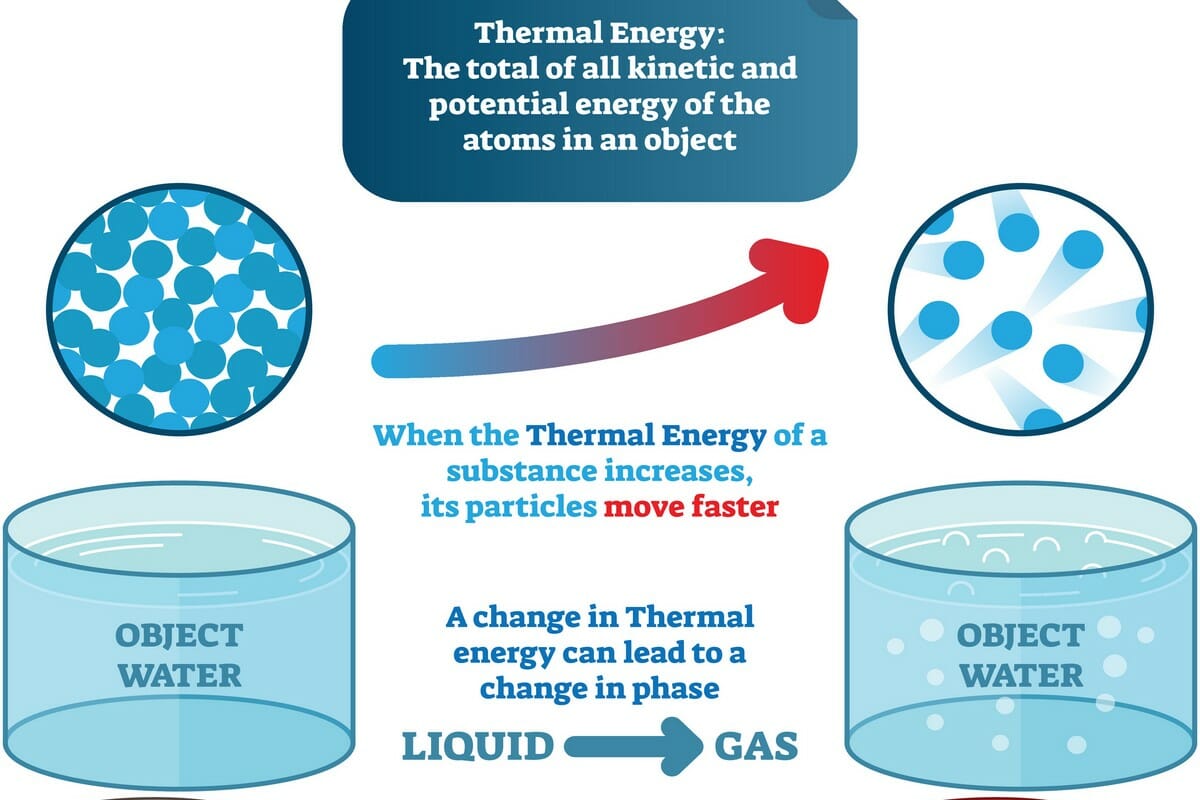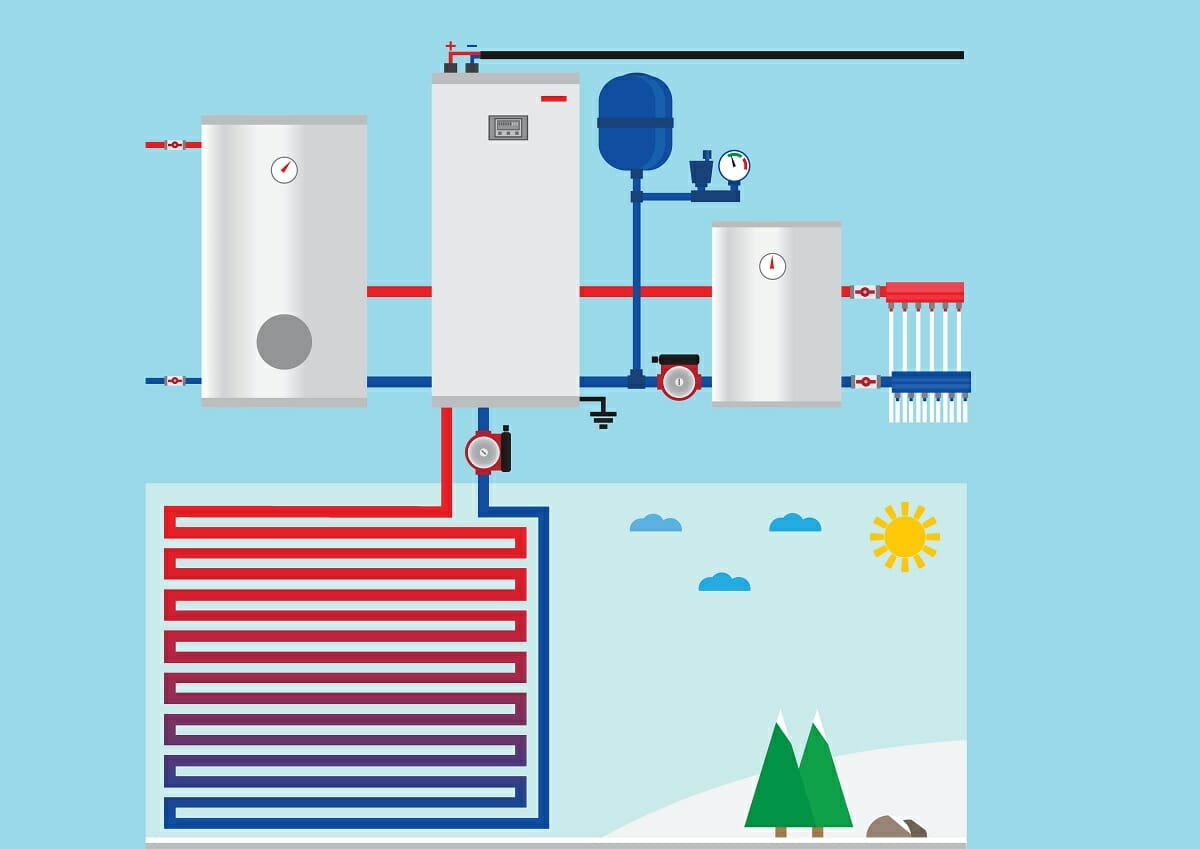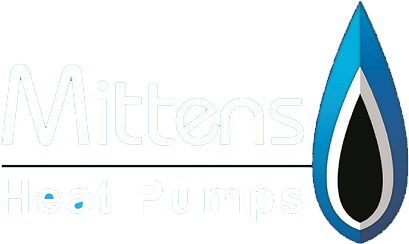Air Source and Ground Source Heat Pump Effective Temperature Range
Table of Contents
Investing in a heat pump – whether it’s a ground source heat pump or an air source heat pump is a smart choice not just for your comfort but also for your pocket. Heat pumps are highly energy-efficient, produce far fewer carbon emissions than traditional heating systems, and are extremely cost-effective.
Although the initial cost of installation is huge, you will certainly achieve some big savings as far as your house’s energy costs are concerned and there are government incentives to help you defray the initial cost. It’s essential to know what a heat pump is and how they work before you invest in them. The Mittens Heat Pumps UK is committed to educating you on heat pump systems so as to help you to make informed decisions.
Temperature, Kinetic Theory, and the Gas Laws

These gas laws consist of three primary laws: Boyle’s Law, Charles’ Law, and Avogadro’s Law. Boyle’s Law states that as the pressure decreases, the volume of gas increases. Charles’ Law says that gas volume increases with increasing temperature.
And Avogadro’s Law states that as the amount of gas increases, the volume of gas also increases. The combination of these three gas laws is called the Ideal Gas Law.
The kinetic molecular theory of gases is a model that helps us to understand the physical properties of gases at the molecular level. Gas particles collide constantly with one another and their container walls. These collisions are elastic; that is, the collisions do not cause a net loss of energy.
Our Guarantee
- Over Six Years Experience
- Unrivaled Experience
- An Exceptional Service
- Unbeatable Value For Money
- Industry-approved Scaffolders
- A Full Range of Heat Pumps Services
- Professional, Reliable and Diligent
- 100% Safety and Satisfaction
Thermodynamics – a Short Summary
Thermodynamics is the field of physics dealing with the relation between heat and other properties in a substance such as pressure, temperature, density, and so on.
Specifically, in a physical system undergoing a thermodynamic process, thermodynamics focuses in large part on how a heat transfer is related to various energy changes. Such processes usually lead to work being performed by the system and are guided by thermodynamics laws.
Generally, a material’s heat is seen as a representation of the energy the material’s particles contain. This is called the kinetic theory of gases, although, to certain extents, it also applies to liquids and solids.
Heating Capacity Decreases When Temperatures Decrease
We often believe heat and temperature are the same things. It’s not so. Heat raises or lowers the temperature. Heat is a cause while the effect is temperature. That’s why the temperature outside determines the heat that your heat pump system can bring into your house.
As the temperature outdoors goes down, the air source heat pump’s heating capacity decreases, too. Therefore, we recommend that you put a backup heating system in place to meet your heating needs when the outdoor temperature goes down.
We Are Also Available to Offer Heat Pumps Related Advice
The Minimum Temperature Required for Heat Pumps to Keep Functioning
Air Source Requirements
A typical air source heat pump for domestic premises can absorb useful heat up to around -15°C (5°F). At colder temperatures outside, the heat pump is less efficient. In such cases, if the supplementary heating system is big enough, the heat pump system may be turned off and the space heated using only supplemental heat.
Air Source Efficiency Changes over Different Temperatures
The efficiency of air source heat pumps drops as temperature goes down, and because the initial cost is high, sizing a system for the coldest temperature possible is generally not cost-effective. This supplementary heat can be provided by alternatives such as natural gas, propane, oil, or biomass.
Temperature Compensation with Auxiliary Heat
Air source heat pumps are often combined with auxiliary or emergency heating systems to provide backup heat when outdoor temperatures are too low for the pump to operate efficiently, or if the pump fails. A faulty heat pump can lead to an excessive use of energy in the home and you may not realise it until your electric bill arrives.

Ground Source Requirements
In cold weather, ground source heat pumps keep working efficiently because they are located under the ground where the temperature is constant and replenished naturally. Regardless of whether the climate is cold or hot, ground source heat pumps can still maintain efficient operational levels due to the temperature underground that is so constant.
Ground Source Efficiency Stays High as the Ground Temperature is Quite Stable
Ground source heat pumps do not require a defrost cycle, as opposed to air source heat pumps which do. Underground temperatures are much more stable than air temperatures and the heat pump unit is placed underground, so frost is not an issue.
Heat Pump Type
Working Fluids for High-temperature Heat Pumps
If the distribution temperature reaches 200°C, water becomes even more desirable as a working fluid. A heat pump that uses water as the system’s fluid will have an average output coefficient of five and a gross temperature rise of 70°C for a 200°C condensation temperature.
Refrigerants Have Different Rates of Efficiency at Different Temperatures
A refrigerant is a substance or mixture used in a heat pump and refrigeration cycle, normally a fluid. You also choose a coolant when choosing an air conditioning or refrigeration system.
When you choose a heat pump system, you automatically choose a refrigerant. And when you choose a refrigerant, you are effectively choosing the energy efficiency of the system. The refrigerant is the primary determinant of the efficiency of heating and cooling appliances. A wise choice can save you a large amount of money. You need to ask about their critical temperature to make a wise choice when choosing a refrigerant.
Heat pumps come with a variety of refrigerants for use, with each one having its own advantages and disadvantages. For different refrigerants at a given temperature, the condensation pressure is different. Pressure will become too high for certain refrigerants at high temperatures and normal heat pump components cannot be applied any more.
We Are Also Available to Offer Heat Pumps Related Advice
Refrigerants for Low-Temperature Climates
There is no single refrigerant that can increase the COP (Coefficient of Performance) and heating capacity of heat pumps at lower temperatures. Instead, different refrigerants are combined to enable better heating performance at low temperatures.
According to studies, the combination of R-32/CO2 produces the best performance for increasing the heating capacity of conventional heat pumps at lower temperatures. As a matter of fact, the mixture can improve the heating performance of heat pumps running on R-410A refrigerant by 30%.
Refrigerants for High-Temperature Water Production
R744 (CO2) is a good refrigerant for high temperature water production. It’s a natural refrigerant used in heat pump installations. To reduce the amount of Ammonia in the system, CO2 is often used with Ammonia compressors.
CO2 has a transcritical temperature (cools but does not condense) of 31 °C. At a constant temperature of above 31 °C, condensation doesn’t take place. Instead, the temperature glides. Therefore, the use of CO2 as a refrigerant is suitable for situations where a user allows heating at non-constant temperature, for example, for the production of hot water.
We Are Also Available to Offer Heat Pumps Related Advice
High Performance in Low Temperatures
A heat pump’s coefficient of performance (COP) will generally increase when the output temperature it is required to deliver is low. However, to use a heat pump in a house with limited heat emitters such as, for example, radiators, then it will be more efficient to use a high-temperature heat pump so as to prevent interruption when the heat emitter systems are to be refurbished in the entire building.
Ground source heat pumps that can produce 80°C output temperature are now available. With standard radiators, they are more than enough to heat the building and hot water required in the house.
We Have a Selection of Heat Pumps Which Provide Excellent Efficiency in the Harshest of Conditions

Air Source Heat Pumps
Compared to other types of heat pumps, air source heat pumps are more popular in the UK. An air source heat pump has two components: the air handler unit usually placed indoors and the heat pump itself usually installed outdoors.
The systems come with tubing that contains a refrigerant. The refrigerant moves between the indoor and outdoor units absorbing and releasing heat so as to heat or cool the building.
Modern air source heat pumps can cut down your energy bills by as much as 50%. They are also better at dehumidifying than central air conditioners. That means you get to experience more comfort in the warmer months.
In the past, air source heat pumps were more suitable for regions with warmer climates. However, with the advancements made in their technology, they work well in colder climates as well. You should note, however, that depending on the size of your heat pump, you will need an emergency heating system (also called an auxiliary system) if temperatures drop below 10 to 25 degrees F in your region.
Ductless, Mini-Split Heat Pumps
Air source heat pumps are also available for homes without ducts in a ductless version called a mini-split heat pump. These heat pumps make good add-ons to houses with unmanaged heating systems, such as heat from hot water, space heaters, and radiant panels.
They may also be a good choice for room additions, where it is not feasible to extend or install distribution ductwork. The key benefits of mini-split systems are their compact scale and versatility for different rooms to zone or heat and cool individual rooms.
Mini-split systems are often simpler to install than traditional heating and refrigeration devices. And since mini splits don’t have ducts, they prevent energy losses that are peculiar to ductwork. The main drawback of mini splits is their cost (usually 30% more than central systems). They are also hard to size and install and are often unattractive. Although getting a split-ductless heat pump is more expensive than alternative systems, government incentives can help you offset the cost of installation later on.
Ground or Water Source Heat Pumps
Ground or water source heat pumps transport heat through underground pipes. The pipes carry a water solution that is heated by the soil or lake (or nearby water source) as the case may be, at a temperature of about 10 to 15 degrees Celsius and then supply it to your home.
In comparison with a conventional heating and cooling system, ground source heat pumps can lower your energy consumption by 25% to 50%. Moreover, they are silent, need minimal maintenance, operate efficiently in severe climate conditions, and are long-lasting.
However, not all space and soil conditions are suitable for ground source heat pumps and they are very expensive to install, more expensive than their air source counterpart.
Get in Touch With us for Your Heat Pump Hire Quotes
